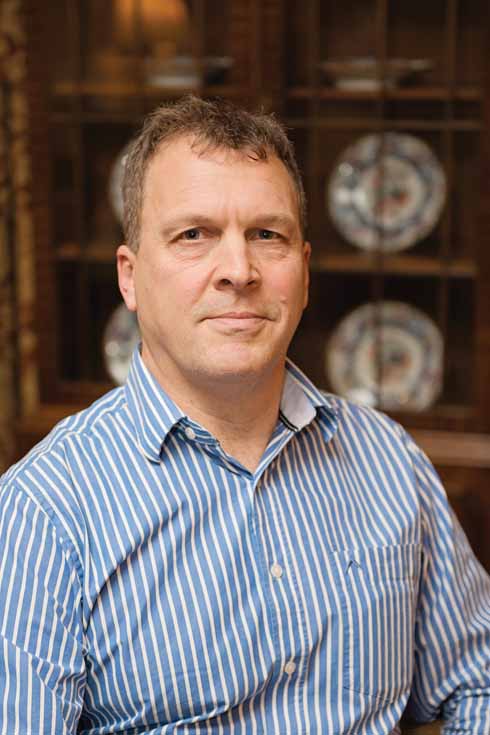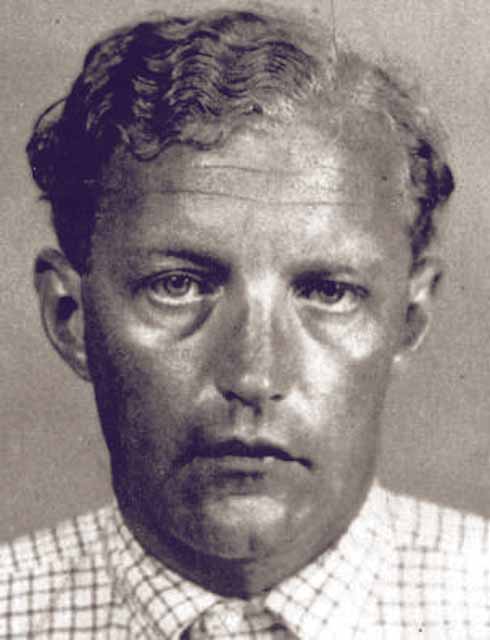Filming the heart of a murderer
Lindsay Neal looks at the grim tale of Bournemouth killer Neville Heath and a film that has been written about his life
Published in June ’16

Doreen Marshall, whose father and sister Heath joked with when they came to look for her in Bournemouth
It was the case that gripped the nation: a nationwide manhunt for a vicious killer who had slaughtered a part-time actress in a London hotel. On Saturday 6 July 1946 the object of the manhunt, former RAF pilot Neville Heath, was arrested in Bournemouth, where he had been staying at the Tollard Royal Hotel on the West Cliff, posing as Group Captain Rupert Brook.
He was transferred to London the following day and charged with the murder of Margery Gardner in a Notting Hill hotel room. Later that day, a waitress out walking her dog found the mutilated body of Doreen Marshall next to a rhododendron clump at Branksome Dene Chine. She too, it transpired, had been murdered by Heath, who was duly charged and put on trial at the Old Bailey, where the full extent of his life of deception became clear.
Now the events of that summer are to be revisited in Heart of a Murderer, a new film to be shot on location in Bournemouth and written by Poole-based screenwriter Adam Dickson, who explains: ‘Heath was a strapping war hero, good-looking, dashing and young – he looked older but was only 29. At his trial some women queued for up to fourteen hours for a seat in the public gallery. There’s an account of a couple taking their seats and unpacking a flask; another account of a woman pleading to be let in as she had travelled so far.’
Heath joined the RAF in 1937, but was court-martialled for stealing an officer’s car and going absent without leave. Enlisting in the Royal Army Service Corps, he was posted to Cairo where he was again court-martialled after being caught forging cheques. On his way home Heath jumped ship in South Africa, where he passed himself off as Bruce Lockhart and met and married the wealthy 18-year-old Elizabeth Pitt-Rivers, with whom he had a son, before joining the South African Air Force and being seconded to Bomber Command back in England.
‘He was a very good pilot and when his subterfuge was discovered, the RAF was so desperate for bomber pilots that it effectively turned a blind eye,’ says Adam. ‘He flew many successful missions over occupied Europe and on one occasion stayed aboard his burning plane to allow members of his crew to bail out before jumping himself.’

A postcard of the Tollard Royal Hotel, post-1930 when the third and fourth floors and domed solarium were added (Alwyn Ladell. www.flickr.com/photos/alwyn_ladell)
After the war, Heath returned to married life in South Africa, where he was court-martialled for a third time for wearing medals which he was not entitled to wear. He was arrested for fraud, divorced and early in 1946 was deported back to England. ‘He associated with low-lifes, petty criminals and prostitutes and had this sado-masochistic side, which is how he met his first victim,’ recounts Adam. ‘He later said he had only lent her his hotel room so she could meet a man. He also said initially that he had left Doreen Marshall in Bournemouth Gardens where she was going to meet a man called Jackson, so without modern forensic techniques there wasn’t any actual evidence to put him at the scene at the time either crime was committed.’
A wanted suspect for the Margery Gardner killing, Heath fled London with the police on his heels and ended up in Bournemouth where, calling himself Brook after the World War I poet (but without the poet’s final ‘e’), he met ex-Wren Doreen Marshall, who was staying at the Norfolk Hotel on Richmond Hill as she recovered from ’flu. He invited her to afternoon tea that day, Wednesday 3 July, at the Pavilion and met her again that evening for dinner at his hotel, after which they left together, saying he was going to walk her back to the Norfolk.
On the Friday, the manager of the Norfolk reported her missing to the police and contacted his counterpart at the Tollard Royal, who advised his guest Group Captain Brook – Heath – that he should contact the police, which he did by phone on the Saturday. He then walked into Bournemouth Police Station where, quite by chance, he met Doreen Marshall’s father and sister who had come to Bournemouth to find her and joked with them that he looked like the fugitive Heath. Under questioning later that evening, he confessed to being Heath and was taken to London before Doreen’s body was found the next day.
Although the facts are all represented in Heart of a Murderer, Adam makes no bones about taking a certain amount of dramatic licence. He establishes a chambermaid at the Tollard Royal and her boyfriend who works in the kitchen, on whom Heath works his manipulative powers. There’s also another woman, a fellow guest called Susan Moorland, with whom he becomes infatuated, telling her that he was in the RAF with Heath.

Today the Tollard Royal is known as Tollard Court and has been converted into flats (Alwyn Ladell. www.flickr.com/photos/alwyn_ladell)
‘I also build up a fictional character called Peter Arnold, who is based on a real person called Peter Rylatt, a demobbed lawyer who met Heath in Bournemouth. He knew nothing of Heath’s real identity, but in the film Heath and Arnold are quite close and Arnold brings a succession of women for Heath to meet at the Pavilion. So you have the dashing Heath and the slightly seedy Arnold, but who is manipulating whom? It creates a bit of ambiguity around the identity of the killer.’

Heath insouciantly smoking his pipe while he is flanked by detectives. Heath was described as the psychopath’s psychopath.
The film builds to an inevitable conclusion. Heath’s trial at the West London Police Court opened on 24 September and lasted three days. He was found guilty of the murder of Margery Gardner (the charge of murdering Doreen Marshall was not proffered) and hanged in Pentonville Prison on 16 October 1946 by Albert Pierrepoint.
‘Usually when prisoners were sentenced to death, they would need counselling or sedation after being taken down, but Heath sat calmly and played chess with court officials,’ says Adam. ‘In prison he referred to his execution as a “one-way op”, RAF parlance for a suicide mission. At the time they called him “the most dangerous criminal modern Britain has known” and he has since been described as the “psychopath’s psychopath”, which perhaps goes some way to explaining his continuing appeal. There seems little or no doubt about his guilt, although mystery surrounds a tuft of hair found near the second murder scene. It wasn’t Doreen Marshall’s hair, so whose was it? The question has never been answered.’
However, Heart of a Murderer will be the first film to have been made about the specific events and Adam has secured the interest of Creative England, the not-for-profit organisation that supports the creative industries. He is now re-writing his script with a view to securing a producer or director.

Adam Dickson at Branksome Dene Chine, where Neville Heath murdered Doreen Marshall. In 1946 the promenade, car park, beach huts and café had not yet been built.
‘The film is in the development stage but it will happen this year. Creative England wants a local story written by a local writer and filmed in the actual locations, all of which we can do, although Branksome Dene looks very different today. After all the research, including reading the transcript of the trial, I’m completely gripped by Heath. Albert Pierrepoint said the only prisoner Detective Inspector Spooner of Scotland Yard ever asked him about was Neville Heath. He told him Heath went to the rope “without a murmur”. I find that absolutely chilling.’




